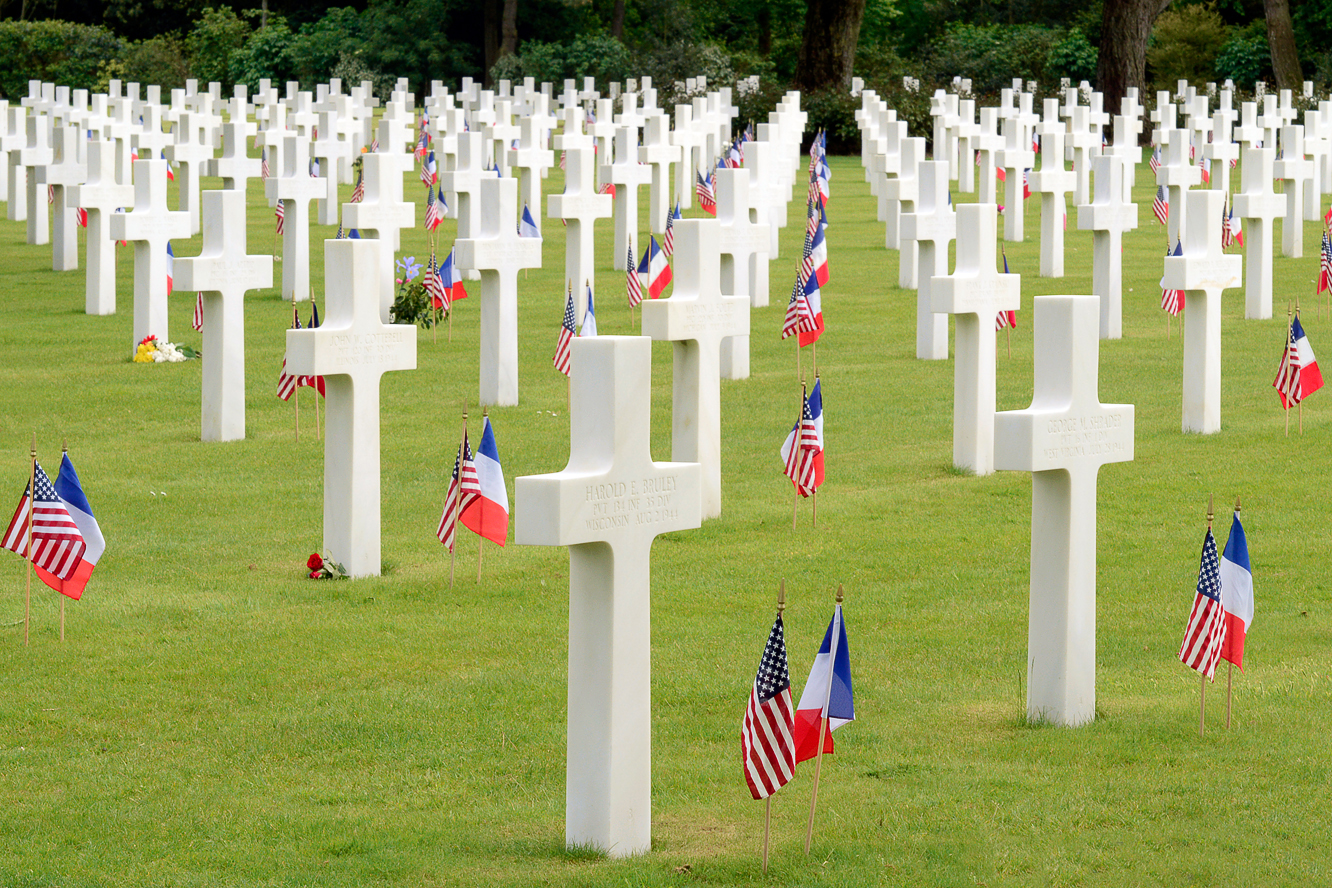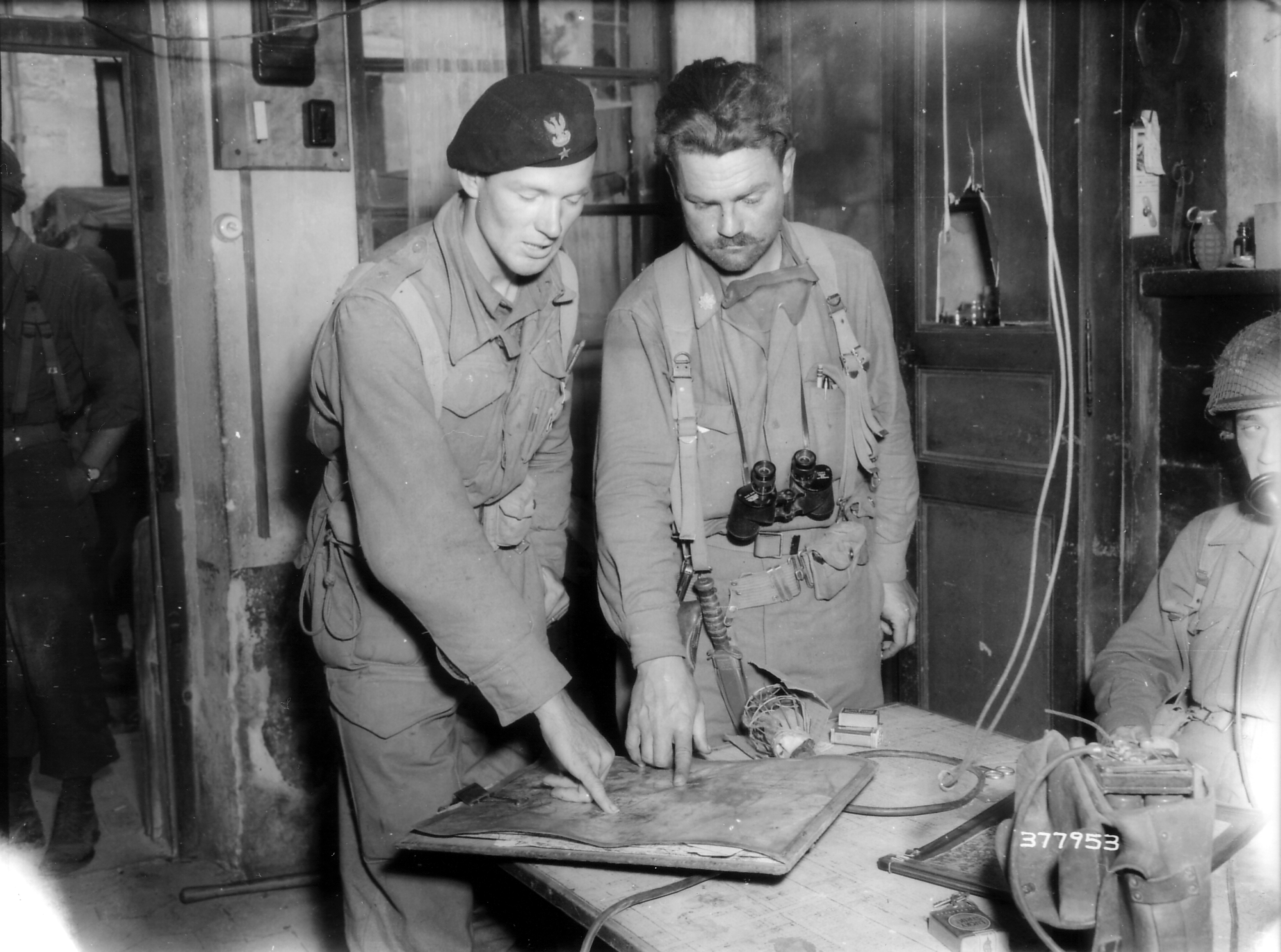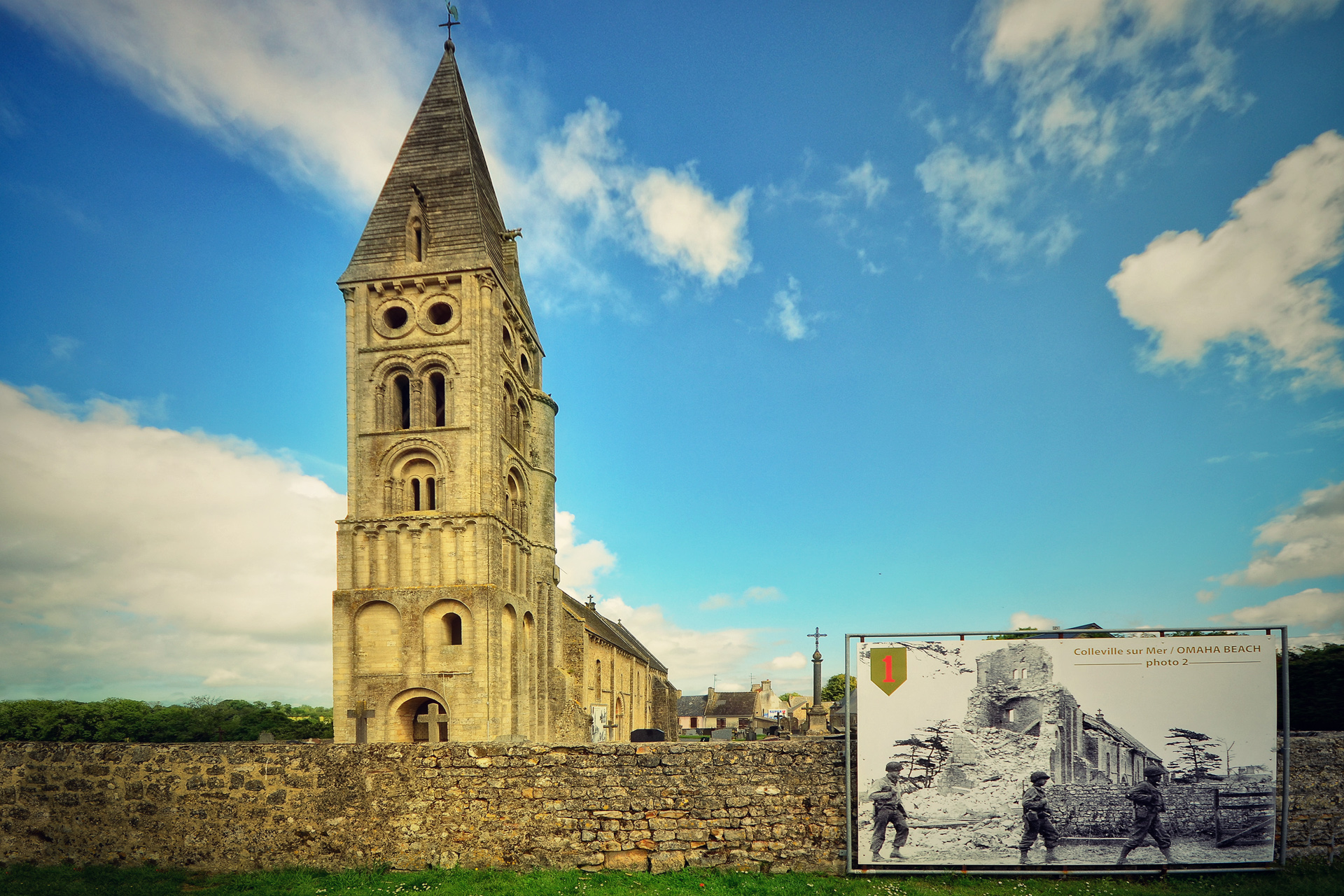|
Orglandes German War Cemetery
Orglandes War Cemetery is a German World War II cemetery in Normandy, France. It is located on the northern edge of the village of Orglandes, about south east of Cherbourg and west of Sainte-Mère-Église on the Cotentin Peninsula. The burials come from summer 1944, immediately following D-Day and the Battle of Normandy. It is the second smallest of the six German war cemeteries in Normandy with a little over 10,000 burials. The cemetery is maintained and managed by the voluntary German War Graves Commission (''Volksbund Deutsche Kriegsgräberfürsorge''). Formation Created during the Battle of Normandy on 20 June 1944, the cemetery was formed by the 603rd Quartermaster Graves Registration Company for the burial of fallen 1st US Army service personnel. Initially one field containing American war dead was created followed by another for German casualties. At the war's end over 7,300 German soldiers were interred at the cemetery. The American Battle Monuments Commission began exh ... [...More Info...] [...Related Items...] OR: [Wikipedia] [Google] [Baidu] |
German War Graves Commission
The German War Graves Commission ( in German) is responsible for the maintenance and upkeep of German war graves in Europe and North Africa. Its objectives are acquisition, maintenance and care of German war graves; tending to next of kin; youth and educational work; and preservation of the memory to the sacrifices of war and despotism. Former head of the Bundeswehr Wolfgang Schneiderhan was elected President of the organisation in 2016, succeeding SPD politician Markus Meckel. The President of Germany, currently Frank-Walter Steinmeier (SPD), is the organisation's patron. Role The German War Graves Commission cares for the graves, at 832 cemeteries in 46 countries, of more than 2.7 million persons killed during World War I and World War II. The German war graves are intended to remember all groups of war dead: military personnel, those dead by aerial warfare, murdered in the Holocaust, and all other persons persecuted to death. In addition, the Volksbund maintains cemeteries ... [...More Info...] [...Related Items...] OR: [Wikipedia] [Google] [Baidu] |
American Battle Monuments Commission
The American Battle Monuments Commission (ABMC) is an independent agency of the United States government that administers, operates, and maintains permanent U.S. military cemeteries, memorials and monuments primarily outside the United States. As of 2018, there were 26 cemeteries and 29 memorials, monuments and markers under the care of the ABMC. There are more than 140,000 U.S. servicemen and servicewomen interred at the cemeteries, and more than 94,000 missing in action, or lost or buried at sea are memorialized on cemetery Walls of the Missing and on three memorials in the United States. The ABMC also maintains an online database of names associated with each site. History The ABMC was established by the United States Congress in 1923. Its purpose is to: * Commemorate the services of the U.S. armed forces where they have served since April 6, 1917; * Establish suitable War memorials; designing, constructing, operating, and maintaining permanent U.S. military burial grounds ... [...More Info...] [...Related Items...] OR: [Wikipedia] [Google] [Baidu] |
Buildings And Structures In Manche
A building, or edifice, is an enclosed structure with a roof and walls standing more or less permanently in one place, such as a house or factory (although there's also portable buildings). Buildings come in a variety of sizes, shapes, and functions, and have been adapted throughout history for a wide number of factors, from building materials available, to weather conditions, land prices, ground conditions, specific uses, prestige, and aesthetic reasons. To better understand the term ''building'' compare the list of nonbuilding structures. Buildings serve several societal needs – primarily as shelter from weather, security, living space, privacy, to store belongings, and to comfortably live and work. A building as a shelter represents a physical division of the human habitat (a place of comfort and safety) and the ''outside'' (a place that at times may be harsh and harmful). Ever since the first cave paintings, buildings have also become objects or canvasses of much artistic ... [...More Info...] [...Related Items...] OR: [Wikipedia] [Google] [Baidu] |
List Of Military Cemeteries In Normandy
The following military cemeteries were established in the French region of Normandy in memory for casualties of the World War II battles there: American * The Normandy American Cemetery and Memorial, located near the battle site at Omaha Beach. * The Brittany American Cemetery and Memorial, located near Saint-James. Despite the name of the cemetery, it is located in Normandy, on the border with Brittany. British * Banneville-la-Campagne War Cemetery contains 2,175 Commonwealth burials of the Second World War with a high number of casualties from Operation Goodwood interred in the cemetery. * Bayeux War Cemetery contains 4,144 Commonwealth burials of the Second World War, 338 of them unidentified. There are also over 500 war graves of other nationalities, the majority German. * Brouay War Cemetery contains 375 British and 2 Canadian graves with a high number of casualties from the 53rd (Welsh) Division. * Cambes-en-Plaine War Cemetery contains 223 graves of those that fe ... [...More Info...] [...Related Items...] OR: [Wikipedia] [Google] [Baidu] |
90th Infantry Division (United States)
The 90th Infantry Division ("Tough 'Ombres") was a unit of the United States Army that served in World War I and World War II. Its lineage is carried on by the 90th Sustainment Brigade. World War I *Activated: August 1917. *Overseas: June 1918. *Major Operations: St. Mihiel, Meuse-Argonne. *Casualties: Total-7,549 (KIA-1,091; WIA-6,458). *Commanders: Maj. Gen. Henry T. Allen (25 August 1917), Brig. Gen. Joseph A. Gaston (23 November 1917), Brig. Gen. William Johnston Jr. (27 December 1917), Maj. Gen. Henry T. Allen (1 March 1918), Brig. Gen. Joseph P. O'Neil (24 November 1918), Maj. Gen. Charles H. Martin (30 December 1918). *Returned to U.S. and inactivated: June 1919. Order of battle * Headquarters, 90th Division * 179th Infantry Brigade ** 357th Infantry Regiment ** 358th Infantry Regiment ** 344th Machine Gun Battalion * 180th Infantry Brigade ** 359th Infantry Regiment ** 360th Infantry Regiment ** 345th Machine Gun Battalion * 165th Field Artillery Brigade ** 343rd Fie ... [...More Info...] [...Related Items...] OR: [Wikipedia] [Google] [Baidu] |
9th Infantry Division (United States)
The 9th Infantry Division ("Old Reliables") is an inactive infantry division of the United States Army. It was created as the 9th Division during World War I, but never deployed overseas. In later years, it would become an important unit of the U.S. Army during World War II and the Vietnam War. It was also activated as a peacetime readiness unit from 1947 to 1962 at Fort Dix, New Jersey, and Fort Carson, Colorado, and from 1972 to 1991 as an active-duty infantry division at Fort Lewis (Washington), Fort Lewis, Washington. Nicknamed the "Old Reliables", the division was eventually deactivated in December 1991. Insignia The shoulder sleeve insignia is an octofoil resembling a heraldic design given to the ninth son of a family. This represents the son as a circle in the middle with eight brothers around him. The blue represents the infantry, the red the artillery with all the white making the colors of the flag of the United States of America. World War I The 9th Infantry Division w ... [...More Info...] [...Related Items...] OR: [Wikipedia] [Google] [Baidu] |
Asnières-en-Bessin
Asnières-en-Bessin (, literally ''Asnières in Bessin'') is a commune in the Calvados department in the Normandy region of north-western France. The inhabitants of the commune are known as ''Asnièrois'' or ''Asnièroises''. Geography Asnières-en-Bessin is located some 17 km west by north-west of Bayeux, 3 km west of Vierville-sur-Mer, and 4 km north by north-east of Longueville. Access to the commune is by the D194 road from Louvières in the east passing through the north of the commune and the village and continuing west to Cricqueville-en-Bessin. The D198 road goes south from the village through the length of the commune and continues to Aignerville. There is the hamlet of Le Temple just south of the village and Montigny in the south of the commune. The commune is entirely farmland. The Veret river flows through the centre of the commune from east to west and continues west then north-west to the sea at the Pont du Hable. Administration List of Successi ... [...More Info...] [...Related Items...] OR: [Wikipedia] [Google] [Baidu] |
Orglandes War Cemetery 02
Orglandes () is a commune in the Manche department in Normandy in north-western France. See also *Communes of the Manche department The following is a list of the 446 communes of the Manche department of France. The communes cooperate in the following intercommunalities (as of 2020):Communes of Manche {{Manche-geo-stub ... [...More Info...] [...Related Items...] OR: [Wikipedia] [Google] [Baidu] |
Omaha Beach
Omaha Beach was one of five beach landing sectors designated for the amphibious assault component of operation Overlord during the Second World War. On June 6, 1944, the Allies invaded German-occupied France with the Normandy landings. "Omaha" refers to an section of the coast of Normandy, France, facing the English Channel, from east of Sainte-Honorine-des-Pertes to west of Vierville-sur-Mer on the right bank of the Douve River estuary. Landings here were necessary to link the British landings to the east at Gold with the American landing to the west at Utah, thus providing a continuous lodgement on the Normandy coast of the Bay of the Seine. Taking Omaha was to be the responsibility of United States Army troops, with sea transport, mine sweeping, and a naval bombardment force provided predominantly by the United States Navy and Coast Guard, with contributions from the British, Canadian and Free French navies. The primary objective at Omaha was to secure a beachhead deep, be ... [...More Info...] [...Related Items...] OR: [Wikipedia] [Google] [Baidu] |
Colleville-sur-Mer
Colleville-sur-Mer (, literally ''Colleville on Sea'') is a commune in the Calvados department in Normandie region in northwestern France. History It was originally a farm owned by a certain ''Koli'', a Scandinavian settler in the Middle Ages. It shares the same etymology as the other Colleville in Normandy. During the conquest of England by William the Conqueror or following it, Gilbert de Colleville was given lands in England, it was from this Knight that the modern de Colville/Colvin/(Calvin in France,) family would develop, also including Clan Colville in Scotland and the Barony de Colville, of Castle Bytham in England. The beach next to the coastal village was one of the principal beachheads during the Normandy landings on 6 June 1944, designated Omaha Beach. Population Sights * Normandy American Cemetery and Memorial is located in Colleville-sur-Mer. * Notre-Dame de l'Assomption de Colleville: dated to the 12th or 13th century, a historical monument since ... [...More Info...] [...Related Items...] OR: [Wikipedia] [Google] [Baidu] |
Normandy American Cemetery And Memorial
The Normandy American Cemetery and Memorial (french: Cimetière américain de Colleville-sur-Mer) is a World War II cemetery and memorial in Colleville-sur-Mer, Normandy, France, that honors American troops who died in Europe during World War II. It is located on the site of the former temporary battlefield cemetery of Saint Laurent, covers 172.5 acres and contains 9,388 burials. A memorial in the cemetery includes maps and details of the Normandy landings and military operations that followed. At the memorial's center is ''Spirit of American Youth Rising from the Waves'', a bronze statue. The cemetery also includes two flag poles where, at different times, people gather to watch the American flags being lowered and folded. The cemetery, which was dedicated in 1956, is the most visited cemetery of those maintained by the American Battle Monuments Commission (ABMC), with one million visitors a year. In 2007, the ABMC opened a visitor center at the cemetery, relating the global sig ... [...More Info...] [...Related Items...] OR: [Wikipedia] [Google] [Baidu] |





